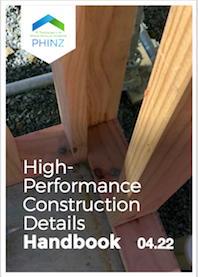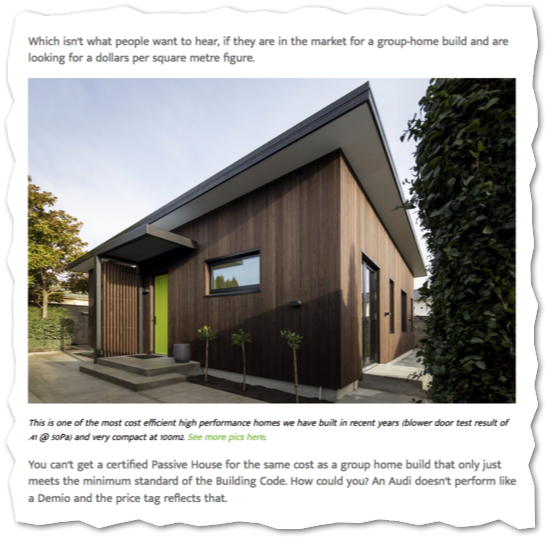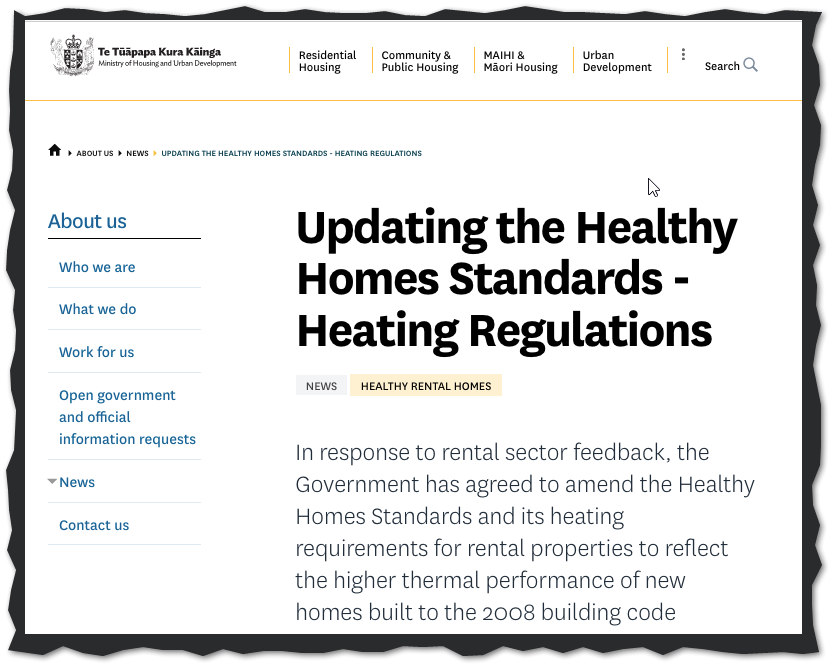It’s great to see the data from our work on the High-Performance Construction Details Handbook being used to improve the industry. Starke is a window fabricator that has got on board with producing better-performing windows and doors. Its blog post is very clear and concise on the issues, fixes and benefits of recessed window installs.
BRANZ edition of HPCD out now

It’s great to finally pin a bow on this project and call it done. The final version of the HPCD (the High Performance Construction Details Handbook) has now been fully reviewed and accepted by BRANZ and published as External Research Report ER70 [2022]. It’s been a long journey—it began before we’d even heard of Covid-19. There were over 6300 downloads of …
Be a certification pro
Passive House certification offers many benefits and the cost is tiny relative to the whole budget for a new home. As a Passive House designer, you can make the process faster, easier and contain costs for your client by being well-organised and diligent when it comes to the details required for certification. I’ve prepared a guide for documentation for new …
Lazy overglazing is causing expensive problems
What is it with glass? Buildings in Australia and New Zealand tend to be over-glazed. Is it because huge windows look good in the renders and are a quick go-to for lazy architects? Glazing is best used to frame views. Think of windows as picture frames, not an alternative material for a wall. Glazing needs to be designed with three …
Carbon budget modelled for NZ new builds and existing stock

This is an excellent paper on modelling the carbon emitted by New Zealand homes during construction and use against the IPCC 1.5 degree emission targets. The authors follow population weighting all the way down. I recommend reading the whole thing. Figure 1 shows the current estimates for New Zealand new construction Life Cycle Analysis (LCA) carbon emissions for the next …
Fuel poverty harms mental health too
Living in a cold house you can’t afford to heat causes physical health problems, up to and including premature death. There’s plenty of evidence supporting this and I’m grateful to researchers like Professor Philippa Howden-Chapman and her colleagues at the University of Otago for (a) doing the research in this country and (b) communicating their research findings to a broad …
Why Passive House costs more

If you’ve met Christchurch Passive House builder Peter Bielski, you’ll know he’s a man of few and well-chosen words, not minced. His company is involved in an ambitious project to create a new sub-division of certified Passive House Plus homes. In a recent blog post, he tackles the question of cost premiums for Passive House performance. He’s quite right: when …
Healthy Homes Standard tweaked

A December 3 announcement on changes to the Healthy Homes Standard solves one of the issues caused by this well intentioned legislation. We were designing absolutely best practice apartments, which wouldn’t meet the HHS extract requirements for ventilation. I discussed this with HUD several times and I can vouch that their people wanted to encourage this best practice—but they were …
New thermal performance data for NZ timber window profiles

Consulting with building component manufacturers to help them make good products even better is a favourite activity for the Sustainable Engineering team. Lunds Joinery, a highly-regarded family-owned company in Timaru, approached us to do some window calculations for their standard timber profiles. Lunds incorporated the fRSI calculations and Uf data into a new publication, the LJT Timber Window Guide, which …
